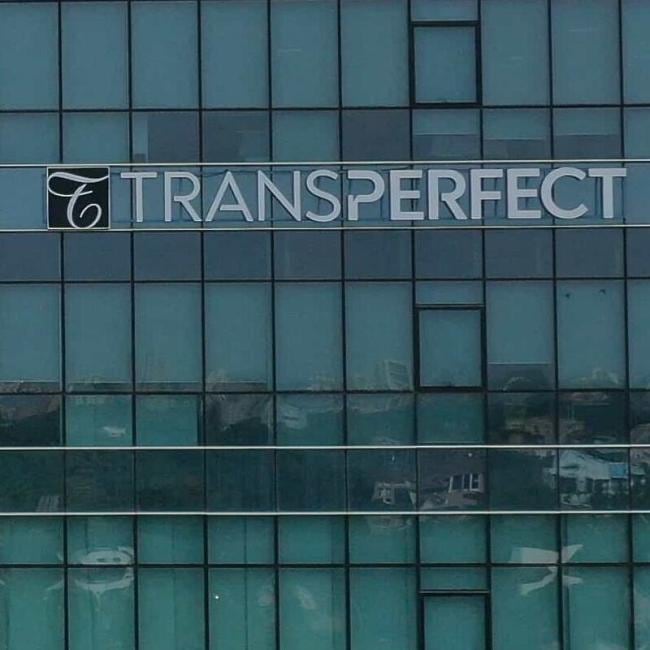How to Use a CMS to Build Your Brand


Your company’s brand is strengthened — or weakened — with every user guide, training video, instructional graphic, and packaging insert you publish. For this reason, it’s imperative you strive to produce high-quality material at all times. The material you produce must also give a consistent message in order to elevate your brand.
Why is it imperative to produce consistent material? If your company’s internal documents contain critical errors or vary in terms of writing styles and messages, they will cause confusion for customers.
In some cases, errors could even be dangerous to customers. Consider a healthcare company, for instance, which needs to publish medical information detailing proper usage for a particular product. If a critical change is made in how a product is administered or used, that change needs to reach consumers. There can be no outdated instructions in this regard.
This is especially challenging for larger companies, which are often tasked with creating an enormous amount of resources — and often in a very short amount of time. Heavy content production at the enterprise level therefore needs to be extremely well-organized.
Your company’s brand is strengthened — or weakened — with every user guide, training video, instructional graphic, and packaging insert you publish. For this reason, it’s imperative you strive to produce high-quality material at all times. The material you produce must also give a consistent message in order to elevate your brand.
Why is it imperative to produce consistent material? If your company’s internal documents contain critical errors or vary in terms of writing styles and messages, they will cause confusion for customers.
In some cases, errors could even be dangerous to customers. Consider a healthcare company, for instance, which needs to publish medical information detailing proper usage for a particular product. If a critical change is made in how a product is administered or used, that change needs to reach consumers. There can be no outdated instructions in this regard.
This is especially challenging for larger companies, which are often tasked with creating an enormous amount of resources — and often in a very short amount of time. Heavy content production at the enterprise level therefore needs to be extremely well-organized.
So how do you go about creating a heavy volume of content that can also ensure a strong and impeccable brand image? How do you speak directly to your target audience over a range of mediums? The answer to this problem is to repurpose your content.
Through the act of repurposing your content, you can take a single idea and modify it to fit over many different channels. It’s a way of getting more out of your resources, instead of having to spend more money by hiring additional staff or outsourcing your in-house production.
Think of it this way: Repurposing your content is like making a giant turkey on Sunday, then re-using it throughout the week. You may, for instance, make a turkey soup on Monday, a turkey salad for lunch on Tuesday, turkey sandwiches for lunch on Wednesday, and — if you’re not sick of it yet — turkey and rice on Thursday.
Repurposing content works in the same way. What was once a set of instructions in a user guide could be used again at a later date in a PDF. Then, it could make for a great instructional video. You could also expand the idea into training material. By switching its format, and spreading it across multiple platforms, you could get significantly more mileage out of your original material.
Why Repurposing Content Is Critical for Building a Strong Brand
You may be wondering: Why don’t you just create more original content instead of reusing ideas that you already produced?
If done correctly, repurposing your content could help your company:
- Save time: Why draft the same idea over and over again? Doing so would just increase the likelihood of errors and discrepancies between different writers. Repurposing content can also help increase productivity amongst your staff.
- Save money: Content can be expensive to produce. Rewriting similar content for multiple purposes can take a lot of time — and we all know time is money. Creating professional videos can eat up a good deal of a training budget. By repurposing content, you can take an original idea and make it go further, saving money in the process.
- Deliver a consistent message: You don’t want to confuse your customers by publishing different, conflicting instructions in your documents. By repurposing your content, you will guarantee that your message will be the same across all of your documents, websites, and other deliverables.
- Reach more customers: You may have one customer who prefers to watch training videos on his mobile device, but he does not enjoy reading user guides. Another customer may dislike watching videos, and instead he prefers reading only the instructions he needs. If you only produce a limited variety of content, you run the risk of losing your chance to convey your critical information to a certain demographic. This demographic, in other words, might not connect with the medium you are producing. This could directly impact your bottom line.
This brings us to the next point: How do you know if a piece of content would be a good fit in another repurposed form? Learning to identify an appropriate medium for a certain type of file before you put it into another context is a crucial step in the repurposing process.
Imagine this: Your team just spent several weeks crafting a highly technical service bulletin that will live on your website. Now, you want to connect with your audience. It would make sense to turn this document into an e-book, right?
The reality is that not all ideas translate well on other mediums. Highly technical content — such as specification sheets, training material, and instruction manuals — are often better left unaltered. Otherwise, you could run the risk of omitting critical information in your quest to transform down the data into a more digestible form for the reader.
What you can do, however, is take critical elements of a technical document, zero in on them, and expand them into a different format. Then, you could link back to the original document.
Here are a few questions to ask yourself before you repurpose an idea:
- Will my intended audience be receptive? Someone in sales will view a piece of content differently than a chief engineer, designer, or product architect. Always think about to whom you are delivering a piece of content, then sculpt the content around how that person could best be reached.
- What is your goal with the new piece of content? You may create one type of multimedia only to realize after that it could serve better as a longer resource. Be flexible — content should be subject to change according to your goals.
At this point, let’s stop and ask the following question: Why is it important to put so much care into repurposing your content?
The Pitfalls of Repurposing Content Without a Reliable CMS Solution

A CMS is one of the most important tools that you can use to manage your corporate content. It will consolidate all of your resources into a single platform, giving you complete visibility and control of all the media that your brand produces.
Here’s how CMS software can help your team repurpose content. First, a keyword can be queried that will pull up all of the resources containing similar material. The content producer will be able to see exactly what was published on related subjects, as well as where it lives online and who created it.
So what does life look like without a CMS tool? You will run into the following problems:
Incorrect information: Picture this: A customer calls technical support looking for a walkthrough on a particular product. Technical support, however, simply reads instructions off of a particular document that happens to be not only outdated, but also full of incorrect information. The customer therefore receives wrong instructions directly from someone in your organization, which looks terrible and causes even more frustration.
A CMS tool can allow a single document to be edited in one place, which means once a document is altered, every other department will gain access to the change, too.
Rushed edits: It’s easy for documents to occasionally slip through the cracks and miss the oversight of an editor. This can happen due to a rushed deadline or through overconfidence in a particular material. For instance, an employee is liable to think that he or she does not have to send a document through the editing process and that it is ready to be distributed. When this happens, it could lead to any number of consistencies or errors.
A system that lets you reuse content in a CMS will give you the ability to use automated workflows and email notifications so that content will have to pass through checkpoints before being published. This streamlines the editing process and ensures that multiple sets of eyes will see the content before it ever winds up being published.
By now you may be considering investing in a CMS system for your enterprise. It’s important to realize that CMS platforms will differ drastically in terms of what they offer. Investing in a poorly designed CMS — or one that comes with a limited selection of options — could make life very difficult for your organization when publishing and editing material. You want a comprehensive suite of tools that actually makes the editing process faster and more efficient. Some solutions are designed in a way that will slow down productivity.
The Vasont Systems Approach to Content Repurposing
Vasont Systems — a leading provider of content management software and solutions — makes it easy to manage, edit, and repurpose all of your corporation’s content. It accomplishes this through the use of an intuitive user interface that makes it easy to locate and edit source materials all from a single location. Vasont Systems makes a highly customizable software system that allows for special processing, automated processing, and automatic updates for your content.
Here are some of the core content management system features of the Vasont® CMS:
- Advanced search: There’s nothing more frustrating than knowing the exact topic that you want to reference or reuse, but not knowing where to find it in your system. If you have thousands and thousands of documents, one could potentially spend all afternoon searching in hopes of locating it. You don’t want your employees wasting valuable time hunting down articles that should be easily attainable.
The Vasont CMS solves this problem by providing advanced search capabilities that enable complex and fast searches for graphics, documents, and data. Thanks to this feature, content producers can spend more time being productive instead of being bogged down by having to search endlessly through documents.
- Controlled vocabulary: How do you ensure consistency in regards to preferred or restricted spellings and phrases across multiple documents? It can be difficult to make sure your team is on the same page when posting content to your digital channels. But ensuring consistency is one of the most important steps you can take for your brand image.
Using the Vasont CMS’s controlled vocabulary feature, you can automatically identify and replace incorrect or restricted words and phrases, preventing them from being published. This way, your corporate vocabulary will remain within the guidelines of your set policies at all times.
- Content control: Not all edits may be authorized. In today’s unstable digital landscape, how can you safeguard against hackers or rogue employees from making unwanted changes to corporate documents? Without the right tools, your brand could be in danger of harboring offensive content.
The Vasont CMS can provide content control protection by restricting access to content to only authorized users. Now, content can only be edited by your trusted, qualified writers and editors.
- Project management: Tracking a large amount of projects at once can be difficult for department heads. But staying on schedule and making sure that individual assignments are published or repurposed by their intended deadline is critical for establishing consistency and maintaining core readership.
Using the Vasont CMS, each project can be tracked, monitored, and analyzed for quality control purposes. It’s possible to look at an assignment and follow it through all stages of production until it appears on the intended medium. Then, it’s possible to see how end users are engaging with it.
Perhaps the most important part about the Vasont CMS system, however, is that it provides your business with the ability to easily and affordably update your content as your business changes. You would never want old or outdated content to pigeonhole your brand. But this often happens to companies who lose control over their content. It’s not uncommon for even major brands to discover older, outdated files lurking on a back page of their website or being distributed in new training materials.
Using the Vasont CMS for brand-building purposes means that your company will not have to worry about this problem. You can use the Vasont CMS to see that all of the information your company publishes is up-to-date and reflective of the most recent corporate decisions about editorial tone and style, as well as company information. This way, you will know that when you make corporate updates, your new reference material will change too. In the past, this process could take weeks, months, or even years.
Want to learn more about how Vasont Systems can help you reuse your content? Access the white paper titled “Reuse, Reuse, Reuse.”



